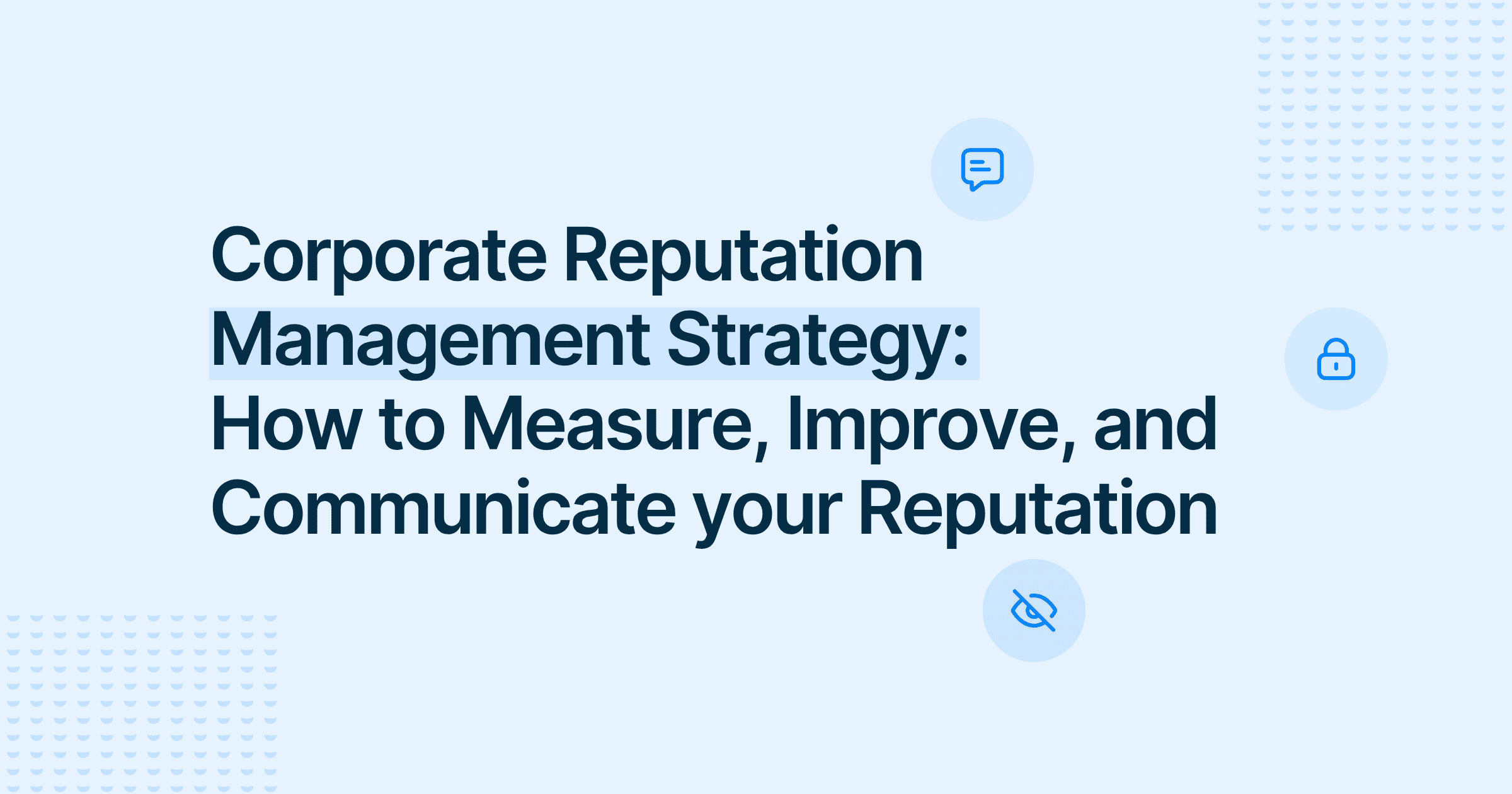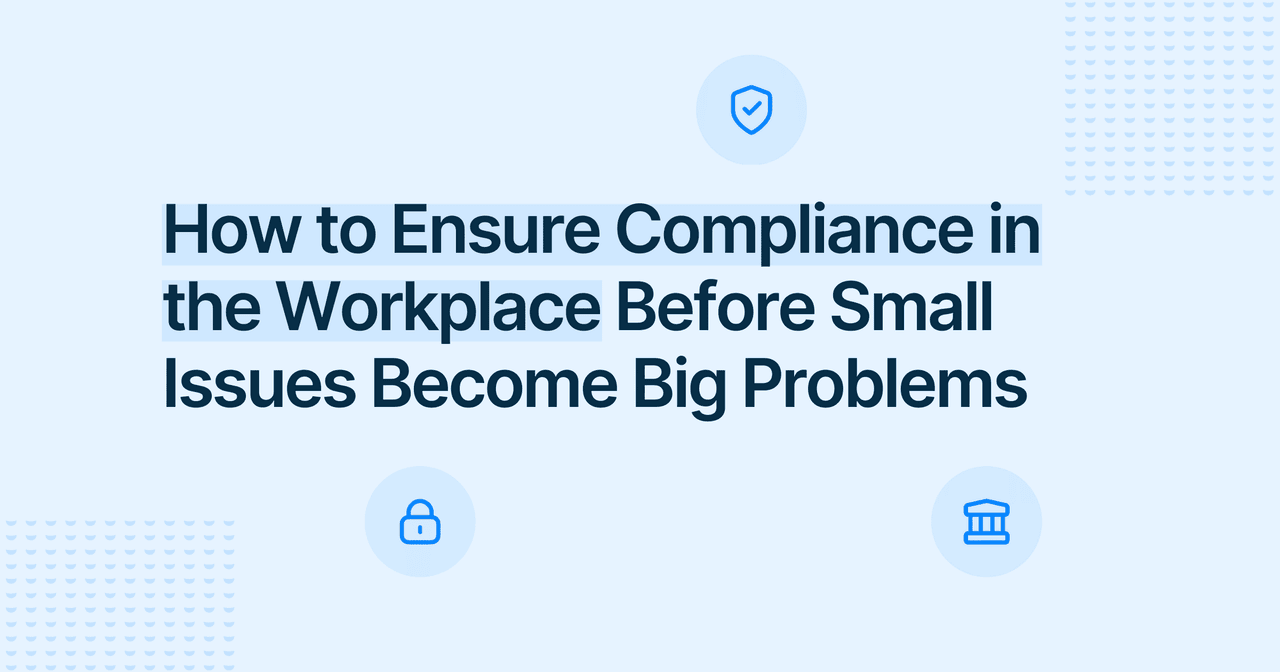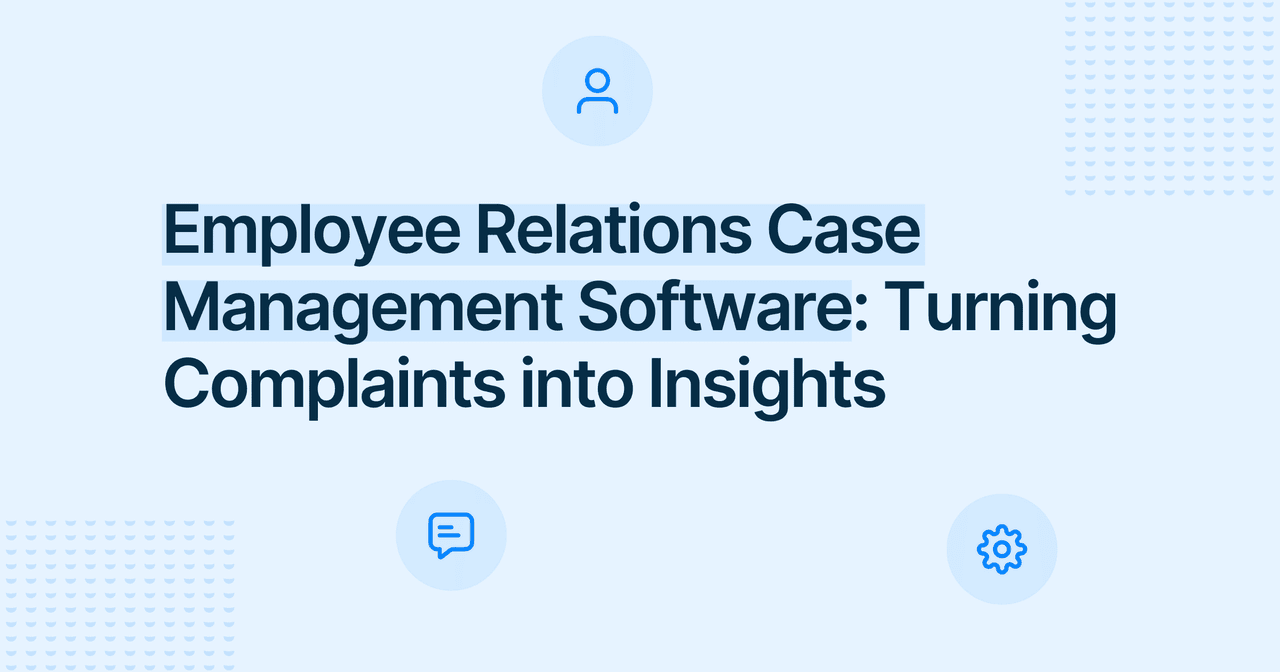Corporate Reputation: Measurement and Strategy Guide
Workplace Environment

Yeva Bartkiv
Copywriter
Published
2025-07-15
Reading time
6 min


Table of contents
Subscribe to our newsletter
In today’s digital age, a company’s reputation is no longer a soft concept; it is a critical component of its success. It’s measurable, actionable, and deeply tied to your organization’s long-term value.
One negative review, one viral complaint, or one mishandled crisis can quickly unravel years of progress. That’s why every modern organization needs a clear and proactive corporate reputation management strategy.
For communications leaders, PR professionals, and CSR teams, reputation isn’t just about good press. It’s about earning stakeholder trust, improving the customer experience, and maintaining resilience when things go wrong.
Let’s break down how to assess, enhance, and communicate your company’s reputation in a way that’s credible, measurable, and sustainable.

What Is Corporate Reputation Management?
Corporate reputation management is the process of shaping and protecting the perception of your company across all stakeholder groups. It combines actions, communications, and public reactions into a single, powerful narrative.
Unlike brand marketing, which pushes messaging out, reputation management requires listening in. It involves tracking online reviews, responding to customer feedback, managing media narratives, and cultivating a long-term positive public perception.
Your brand image extends not only to your website but also across social media platforms, review sites, and community forums. In short, reputation is built one stakeholder experience at a time - and lost the same way.
Why a Strong Reputation Is a Competitive Advantage
A positive reputation offers measurable business returns. It lowers the cost of capital, supports customer loyalty, and boosts hiring and retention. It also cushions your brand during crises and increases your visibility in search engine rankings.
Key benefits include:
- Greater customer trust and repeat business
- More favorable media coverage
- Increased brand awareness and organic SEO reach
- Higher conversion rates from potential customers
- Better engagement across digital marketing channels
In a world where purchasing decisions are increasingly influenced by online presence, managing perception is no longer optional.

The Foundation of an Effective Reputation Management Strategy
A well-executed reputation management strategy isn’t reactive - it’s intentional. Here are the essential components.
1. Reputation Assessment
Start with data. Utilize sentiment analysis, stakeholder interviews, and a corporate reputation survey questionnaire to gain insight into how your brand is perceived both internally and externally.
Utilize social listening tools to monitor brand mentions, track online reputation, and identify spikes in negative feedback or customer complaints.
Don’t forget internal sources of truth, such as employee surveys or whistleblower reports. Resources like our guide to corporate whistleblowing show how internal feedback strengthens reputation oversight.
2. Align Messaging Across the Organization
Disjointed communication dilutes trust. Establish consistency by developing shared messaging guidelines that align PR, HR, executive leadership, and customer support teams.
Your brand image should be aligned across every touchpoint - from LinkedIn updates to press interviews. Strong internal alignment ensures that your values are consistently reflected in every communication, across all social media channels, and customer interactions.
3. Take Action to Build and Protect Trust
Reputation isn't just about how you talk - it's about how you operate. Improving reputation starts with building trust through clear commitments and consistent delivery.
Respond quickly to negative reviews, encourage positive reviews, and demonstrate your values through transparent initiatives. Focus on meaningful action in ESG, workplace culture, and customer satisfaction.
To encourage employees to speak up, start by making it easy for them to do so. If you're unsure how, our post on the importance of speaking up is a great place to begin. These aren’t just good PR moves - they’re the heart of effective reputation management.
4. Crisis Management Preparedness
Every company faces challenges, but not every company is ready for them. Create a solid crisis management plan that outlines who responds, what’s said, and how quickly. Include key workflows for crisis communication, stakeholder outreach, and escalation protocols.
Your team should rehearse crisis scenarios on a regular basis. Don’t wait for an actual incident to figure out how you’ll manage backlash or misinformation. Proactive planning reduces reputational damage and often prevents issues from escalating.
5. Measure Reputation With the Right Metrics
You can’t improve what you don’t track. Use clear metrics to assess your brand health and share results with leadership. Blend quantitative data with qualitative insights to gain a comprehensive view.
Track:
- Volume and tone of online reviews
- Customer satisfaction and trust scores
- Employee sentiment and internal feedback
- Volume of brand mentions and media coverage
- Performance of reputation management software or dashboards
Pull this data into a regular corporate reputation management report and share progress transparently. This helps keep leadership aligned and reputation work funded.
Online Reputation Management in the Digital Age
Your online reputation is often the first and most visible reflection of your company’s values. It shows up in Google rankings, customer testimonials, social media comments, and review platforms like Yelp. Here’s how to take control:
- Use online reputation management tools to monitor brand sentiment
- Respond publicly and professionally to negative feedback
- Encourage satisfied customers to leave reviews
- Optimize your website and listings for search engine visibility
- Track real-time performance using monitoring tools and media listening
Your online presence is not static. It evolves with every customer interaction, post, comment, or mention. Stay engaged.

Corporate Social Responsibility and Reputation
Your corporate social responsibility (CSR) efforts play a crucial role in managing your brand reputation. Today’s stakeholders expect companies to lead with purpose, not just profits.
Talk less about what you intend to do - show what you're doing - report on outcomes, not just goals. Authentic storytelling builds credibility, while overpromising damages it. CSR should be an integral part of your broader reputation narrative, not an isolated campaign.
Whistleblowing and Reputation: A Hidden Strength
What role does internal transparency play in reputation? A significant one. Organizations that empower employees to speak up early often avoid reputational risks before they escalate publicly, encouraging whistleblowing signals that your company values integrity over silence.
Still, many leaders grapple with a crucial question: Is whistleblowing ethical or unethical? The answer depends on how it’s handled internally. A well-managed whistleblower program can enhance your reputation by demonstrating to stakeholders that you take accountability seriously.
Creating a speak-up culture is not just good ethics - it’s innovative reputation management.
Reputation Management Software: Streamline and Scale Your Efforts
For growing organizations, centralized reputation management software is essential. The right solution can help you:
- Monitor reviews, forums, and social media platforms
- Track sentiment analysis in real time
- Automate review management and alerts
- Produce clear corporate reputation reports for leadership
- Integrate with other tools used across public relations, HR, and legal
To keep your brand safe and trusted, technology should enhance, not replace, your strategy. It should help you respond more quickly, work more efficiently, and establish a more positive image over time.
Final Takeaway: Reputation Is Built Every Day
Your company’s reputation is earned slowly and lost quickly. It’s shaped by how you treat employees, how you engage customers, how you handle crises, and how aligned your actions are with your words.
With a thoughtful corporate reputation management strategy, you can stay ahead of risks, foster stakeholder trust, and leverage your reputation as a true business asset.
Book a demo to see how FaceUp helps teams like yours lead with transparency, consistency, and confidence - every day.
Keep Reading

Alaa El-Shaarawi2025-12-048 min
The Best Workplace Compliance Solutions for Safety, Reporting, and Legal Peace of Mind
Legal & Compliance

Alaa El-Shaarawi2025-12-037 min
How to Ensure Compliance in the Workplace Before Small Issues Become Big Problems
Legal & Compliance

Alaa El-Shaarawi2025-12-029 min
What is Compliance in the Workplace? Guide to Legal, Ethical, and Digital Standards
Legal & Compliance

Alaa El-Shaarawi2025-12-017 min
Employee Relations Case Management Software: Turning Complaints into Insights
Employee Relations


